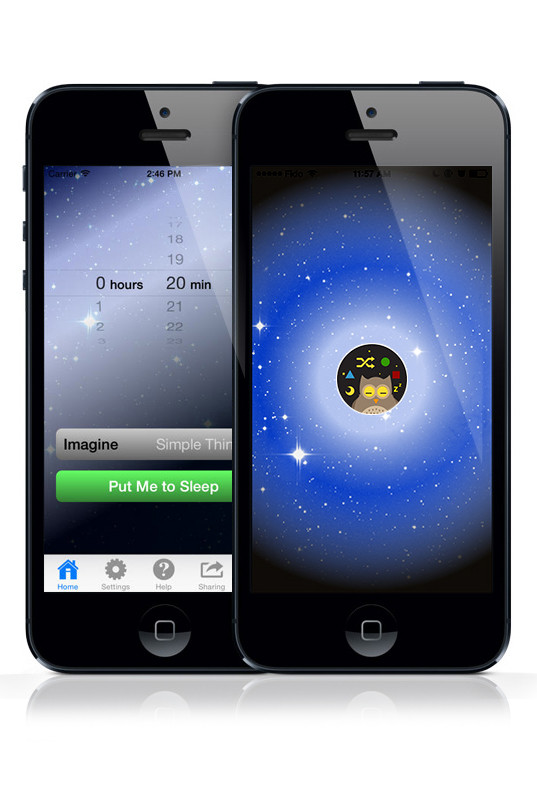Can't Sleep? MySleepButton App Hijacks Thoughts to Help Sleep

Researchers at Simon Fraser University have designed an iOS app to help people to fall asleep that makes use of cognitive science to hijack thoughts so that the brain stops trying to make sense out of them.
The app, mySleepButton, works by reading out a stream of random, unrelated things or scenes that people are asked to imagine. The app might suggest a user thinks of a baby, then a football game, then London, then a bird on a branch.
Users can select a specific timeframe for the app to read out these shuffled thoughts, which change every five to 10 seconds.
By performing a "cognitive shuffle", the brain stops trying to make sense of thoughts, helping users fall asleep.
"The number one thing people think about at night is problem solving, so they can't switch off. Another big thing is that people start worrying about how much sleep they're going to get, which stops them from falling asleep," Luc Beaudoin, an adjunct professor at Simon Fraser University and president of CogSi Apps, told IBTimes UK.

"You can't just tell yourself to fall asleep, the way you might tell your arm to move if you want to raise it in the air. There's a level of indirection there, yet somehow the cortex, which is the higher part of your brain, needs to signal to the lower part of your brain to fall asleep. I wanted to know what the signal is and I hypothesised that it has to do with the suspension of sense-making."
Three types of thinking
Beaudoin coined three terms to explain how people think when they're trying to go to sleep – "insomnolent thinking", whereby people are kept awake by worries; "asomnolent thinking", a neutral form of thinking which neither interferes with nor promotes the onset of sleep, such as counting sheep; and "super-somnolent" thinking, where people manage to avoid thinking about problems that might keep them awake, and experience thought patterns that help them successfully fall asleep.
His research paper, "The possibility of super-somnolent mentation: A new information-processing approach to sleep-onset acceleration and insomnia exemplified by serial diverse imagining", has been published in the Simon Fraser University research repository Summit.
Sleep psychologists have found that when people are drowsy, if they are woken up before they fall asleep, they will experience micro-dreams. Beaudoin realised images were important in attempts to sleep.
He warned that his app was not a replacement for "sleep hygiene" such as avoiding caffeine and heavy meals before bed.
Cannot replace sleep hygiene
The best way to get your mind used to the app is to use it even when you are able to easily fall asleep.

"The app is not just for people with clinical insomnia, it helps people to go to sleep quickly. You can use it when you don't have problems falling asleep, and then you're positively conditioning yourself that listening to the app will help you fall asleep," said Beaudoin.
After a pilot study of 20 people, the app has attracted thousands of users.
"We'll be able to collect more data about sleep onset than ever before to find which content helps people to sleep the best and how long it takes them to fall asleep," said Beaudoin.
"I hope to stimulate the discussion with other sleep researchers and form partnerships with them. My end goal is to help people with their lives. Scientists are doing the research but they're not developing enough apps."
The app is free to download but comes with expansion packs that users can buy to download. An Android version is in the works, together with different language translations, starting with French.
© Copyright IBTimes 2025. All rights reserved.






















